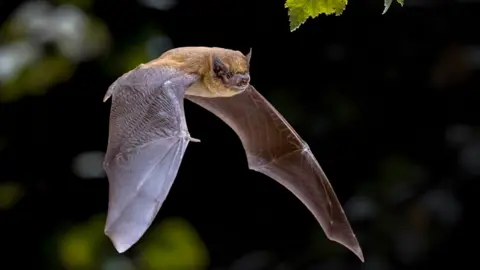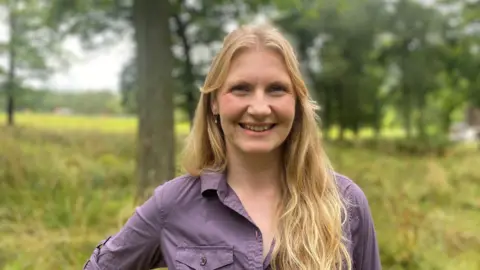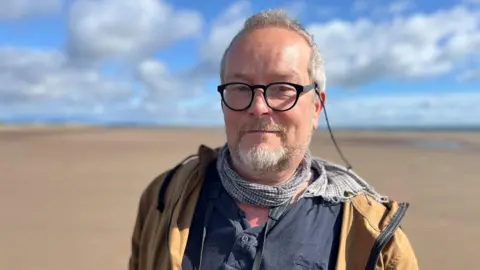 Getty Images
Getty ImagesBeth Bridge is on the front line of the battle to protect Scotland’s bats.
She’s working with farmers and landowners to create the conditions which would enable these endangered mammals to thrive again.
Their numbers have been declining for decades but Beth has been looking at how to plant native trees on agricultural land so they can provide new homes for their roosts in 50 to 100 years time.
It’s an important step in preparing for a potential influx of bats from southern Europe as climate change pushes species north to cooler regions.
Bats love to set up home in the holes and crevices which appear when ancient woodlands begin to decay.
Those habitats have been disappearing for a host of reasons including agricultural intensification as well as road and house building.
Replacing them will take a long time.

Beth, a PhD research student at Scotland’s Rural College (SRUC), says bats’ insatiable appetite for midges mean they should be seen as a friend to anyone who spends time in the outdoors.
It’s estimated that one bat can devour as many as 3,000 midges a night.
Their reliance on insects means their prevalence is often regarded as a test of the quality of an area’s wider ecosystem.
She said: “Conserving bats is really important because not only do they indicate when the rest of nature is really happy and healthy, they also provide a really good ecosystem service in the form of eating insects and controlling their populations.
“This provides pest control for farmers in particular – but it also just helps keep the ecosystem in balance.”

Protecting and restoring nature is considered by scientists and politicians to be just as important as tackling climate change.
The Scottish government has committed to halt the loss of nature by 2030 and reverse it by 2045.
But environmental groups have grown concerned about ministers’ commitment to biodiversity after funding for nature restoration was redirected into local government pay settlements.
They say it’s therefore vital that the Scottish ministers include a Natural Environment Bill in their next Programme for Government which sets legally-binding targets for restoring nature.
Paul Walton from RSPB Scotland says voluntary targets have not worked and wildlife is still being lost.
He added: “We have to do it because nature is critical to our health, our wellbeing, the pollination of our crops, clean water.”
He said mental health was increasingly linked to nature, and that it was also linked to the economy.
“The Scottish tourist industry depends on having a quality environment and we’re losing that wildlife,” he said.
Red light district
Scotland has about 10 varieties of bats, all of which are legally protected from disturbance.
Volunteers in Aberdeenshire have been trying to raise awareness of their importance by organising guided walks along the River Ythan in Ellon, which is a stronghold for bats.
Plans are being drawn up to replace existing LED lights along the bank with red lighting which would decrease light pollution but allow people to see the bats more clearly.
Nature groups believe that helping people make a connection with nature is crucial to the protection of wildlife.
James Davidson, an ecologist who runs the walks for the Scottish Wildlife Trust, says bats are like the ”canary in the coal mine” because they indicate whether an ecosystem is balanced.
He added: “They need the places to roost, the complex environment to be able to move around in, they need the insects to feed on.
“They need all these things to be able to live so if they’re in trouble it suggests we have widespread problems in our landscape that we need to address.”
The Scottish government insists it continues to invest in nature with nearly £40m distributed through its Nature Restoration Fund since 2021.
A spokesman added: “Further nature protection and restoration will be a key consideration in the upcoming Programme for Government, alongside the future legislative programme, including any plans for a Natural Environment Bill.”




